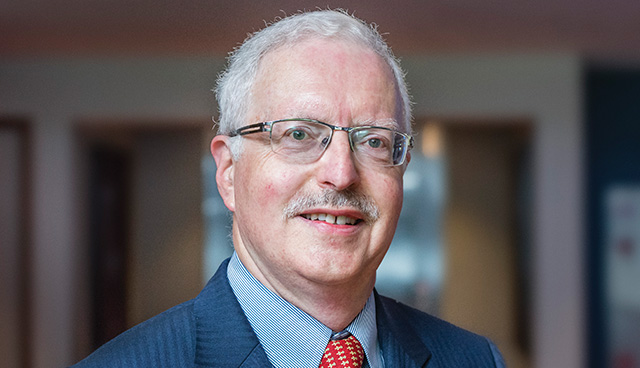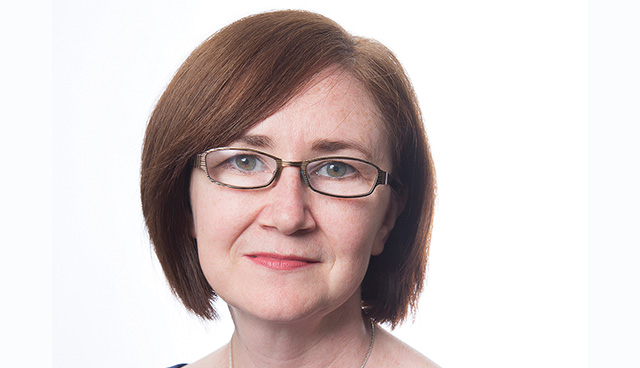
The future of solar energy in Ireland
12th November 2018
Energy transitions: Lessons from Europe and the US
12th November 2018Energy regulatory outlook in uncertain times

Aoife MacEvilly, Commissioner at the Commission for Regulation of Utilities (CRU) offers key insights into regulating water, energy and energy safety in the public interest.
‘Transformation’, ‘innovation’ and ‘acceleration’ are three key terms which set the context in which the regulator operates, according to Aoife MacEvilly. “What most people look for in a regulator is stability, predictability and certainty, but we are working to transform the energy sector to meet our climate change goals. To realise this, we all need to change our behaviour,” she explains, “and we must change some of the decisions we are making at a national, industry, corporate and individual level”. The relationship between regulation and behavioural change makes the Commissioner’s work increasingly relevant in modern times. “We must move away from the notion that regulation is only about hard rules and strict enforcement,” she says, suggesting that Ireland must also look towards the “softer tools in our regulatory toolkit” as a means of pursuing a decarbonised future: incentivisation, market design and behavioural economic nudges.
Incentivising networks
“This isn’t just about electricity and gas networks,” asserts MacEvilly. “It’s about those networks actively supporting the decarbonisation of the Irish economy, and their role in the heating and transport sectors. It’s also about us wanting those companies to invest in innovation”. According to the Commissioner, innovation funding has been granted by way of customer charges. “This should provide a win-win situation for customers, who can benefit from a more sustainable network in their future life,” she argues.
MacEvilly acknowledges the various and differing challenges faced by electricity and gas networks. “If we look at the challenges around electrification, we need to think about the impact of driving very significant increases in electricity demand,” she says. “We need to think about how data centres can be incentivised to move outside Dublin, and to consider locating around areas in our grid where we don’t need significant investment to take on new demand,” she continues. “If data centres do want to locate in Dublin, they must find ways of becoming part of the solution, rather than part of the problem. This includes investing in on-site generation, batteries and generally offering a positive impact to their local grid.”
One of the most high-profile innovation projects seen in recent years has been the Electric Vehicle (EV) charging infrastructure, according to MacEvilly. “The key outcome we wanted wasn’t just the delivery of a national charging network. We also wanted ESB Networks to learn how the increased uptake of electric vehicles (EVs) can be managed without driving significant network investment,” she explains. “For instance, if we all return home at 6pm and plug in to recharge, we need solutions in place to avoid that driving massive demand spikes and requirements for additional grid and generation capacity. That is the challenge, and that is the opportunity granted by innovation funding to ESB networks.”
When it comes to gas, innovation funding is about finding the future role of gas in a low carbon economy, explains MacEvilly. “We believe this will pay off for the customer in finding a sustainable future for that network. It is an asset, and it’s up to us to find the best use of that asset in our decarbonisation ambitions,” she says. “We don’t want the outcome of innovation funding to amount to a nice presentation or a glossy report. We want to see that innovation embedded in the individual decisions that managers are taking about their next set of investments.”
A market design for sustainability
“One of the most important network decisions we have made is in the PR4 Reporting and Incentives decision,” she explains. “These are a series of reporting, reputational and financial incentives for ESB Networks to ensure it imbeds innovation and supports us in our national ambition around decarbonisation. That’s a starting point. It’s about finding the solutions that deliver for both society and customers.”
Beyond incentivisation, MacEvilly argues that solid market design is a key pathway towards delivering the cost-effective decarbonisation of the Irish economy. “Our vision is to design a market, through I-SEM and DS3, which incentivises generators and new players to deliver services at the lowest cost, and links the wholesale and retail markets to engage and benefit customers,” she explains.
Regarding I-SEM, MacEvilly reflects on the success of the project. “We have faced additional challenges in the uncertainty of Brexit. The SEM Committee took a strong leadership role in moving forward with the project, because of the benefits it would bring to the all-island customer,” she suggests. “Whilst we may have hoped for more certainty and stability, we have been comforted by the significant support seen from the UK, Ireland and EU Commission, who are all looking for solutions which can provide for the future of the all-island market,” she continues.
“To see how powerful market design is in affecting change, even in advance of I-SEM going live, we have seen some interesting results in the first capacity action, including increases in demand-side units, with an additional 240 MW coming from that auction,” explains MacEvilly. “We are seeing an incredible new appetite for battery storage. This is the first stage of system services procurement, and we are expecting this to continue with greater success. This is the starting point, not the end point,” she emphasises.

Incentivising behavioural change in customers
Incentivising behavioural change in customers is one of the most significant challenges in decarbonisation, according to MacEvilly. “Behavioural economics demonstrate that as consumers, we are prone to making bad decisions. The official terminology for this is that we ‘misbehave’,” she explains. “We have funded ESRI PriceLab research into how customers make decisions around their utility choices. Based on this, the CRU developed the Estimated Annual Bill, a single basis of comparison between various offers, and this simplification was found to be beneficial. We updated the Supplier Handbook to require suppliers to include this in their advertising,” adds MacEvilly. “These are the outcomes of behavioural economic analysis that we want to build on, particularly because it is active customers who benefit most from competition.”
Smart Metering
“This isn’t just about meters,” argues MacEvilly, “this is about information and empowering consumers to make better choices and unleashing a range of technological options that just aren’t available with the current metering stock”.
The Commissioner highlights that the new EU Clean Energy legislation moves away from targets and towards customer rights – the right to a smart meter, the right to a dynamic tariff. “Ultimately, customers are at the heart of what we do. By giving energy customers better information and options, making them part of the transition, we hope it will facilitate Government policy and create more engaged energy citizens. This project is gearing up significantly ahead of its rollout in 2019,” claims the Commissioner. “If suppliers are not taking action now, they will fall behind,” she warns.
“We also have to look inwards. Business as usual isn’t going to get us to where we need to be,” admits MacEvilly. “We invited in the OECD to review the CRU, and it was a hugely positive experience for us. Whilst the OECD found us to be a ‘high-performing regulator’, they recommended that we introduce reforms, including a comprehensive and well-resourced communications strategy. That ranges from reaching out to customers to being accountable for the decisions we make.
“We are also going to undertake more proactive reporting to the Oireachtas to ensure they have the tools to hold us to account. That is hugely important,” she concludes.
